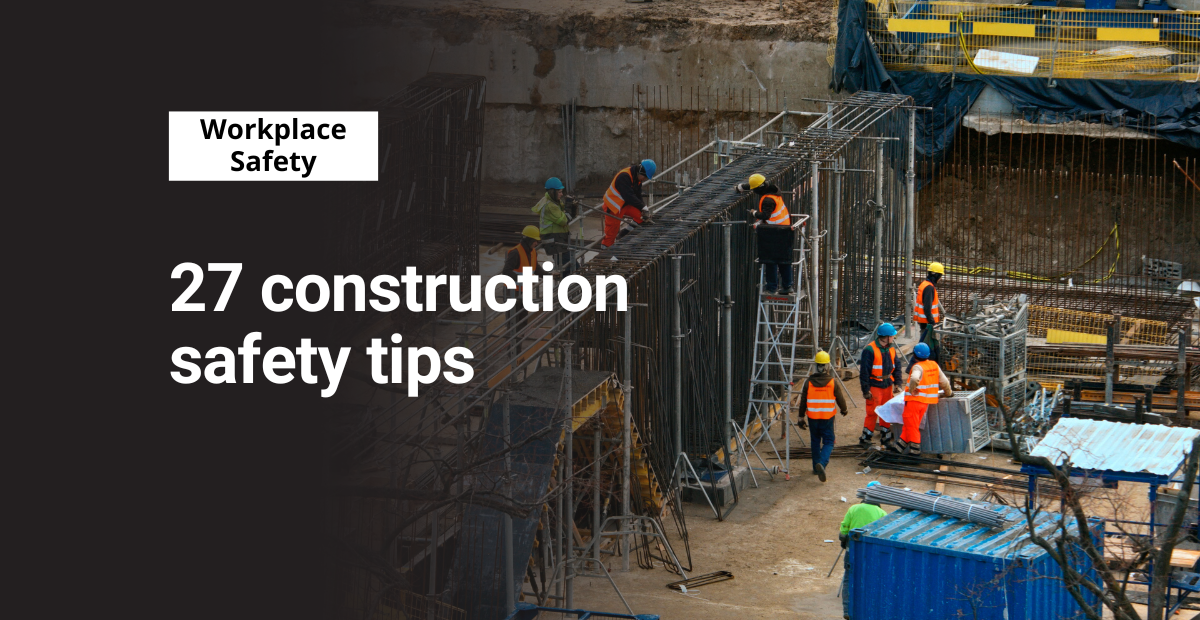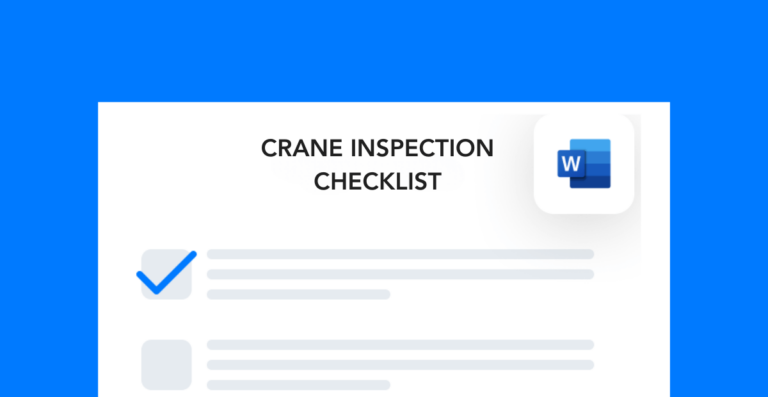The construction industry is responsible for some of OSHA’s most frequently cited standards. From the use of ladders to fall protection equipment, there are many reasons why construction workers need constant safety reminders.
Before your worksite gets up and running for the day, take the time to share these construction safety tips with your team. Simple reminders can make the difference between a good decision and a bad one—ultimately having the power to prevent a major incident.
Operating construction equipment
Below are a few safety tips related to the operation of construction equipment like cranes, boom lifts, and more.
- Conduct a thorough safety inspection before operating any heavy machinery.
- When entering or exiting the cabin, wipe off your boots to avoid slips.
- Keep pedestrians or spectators out of harm’s way by securing the swing radius of your crane.
- Wear high-strength gloves to ensure a firm grip on heavy equipment, door handles, and more.
- Before turning, be sure you have completely cleared the ramp you’re on.
- Avoid jumping out of your cabin and use a step ladder when it’s too high to calmly climb out of.
- In the absence of sufficient hand and footholds to enter the cabin, use a step ladder.
- Always use a spotter when operating in a congested or narrow area.
- Give machine operators plenty of room by not loitering in active work zones.
- Inspect the ground conditions before maneuvering construction equipment into a tight spot.
- Put scaffolding on solid, even ground to reduce fall hazards.
- Never attempt to modify or repair equipment without proper training.
- When working at heights, always hoist heavy equipment up with a rope or your tool belt.
Safe work habits
The best way to eliminate safety hazards on a construction site is for each worker to develop safe habits. These are some of the top habits your team should have in order to maintain a safe worksite.
- Perform a thorough PPE inspection at the start of every shift.
- Don’t walk underneath or directly next to a scaffold if workers are using it.
- If your hard hat sustains an impact, replace it immediately.
- Always put hand tools away when not in use, making sure to keep them off the ground.
- Double check that the chemicals you use are properly labeled and stored according to manufacturer guidelines.
- Keep each area as tidy as possible to eliminate trip hazards.
- Make sure to keep your radio, phone, or other communication devices charged at all times.
- Never walk in roped off areas unless you’re part of the team working in that zone.
- Unplug power tools after each use and wrap the cords up so no one trips over them.
- When lifting a heavy load, consider asking for a team lift or using shoulder dolly straps.
- Wear protective goggles or glasses when working around dust and debris.
- If you notice damage to PPE, machines, or tools, take them out of service until they’re repaired.
- Know where to go or who to contact during an emergency.
- Never attempt to move a ladder or scaffold while it’s in use.




